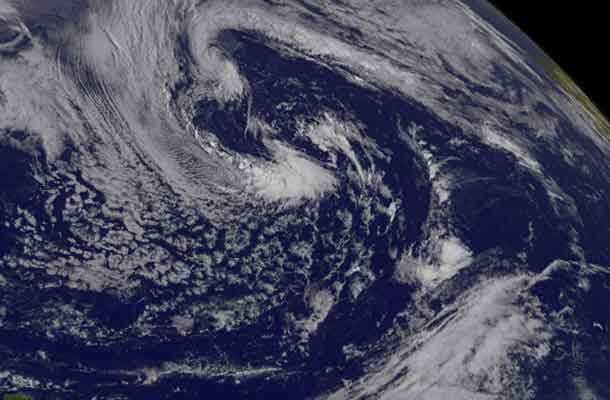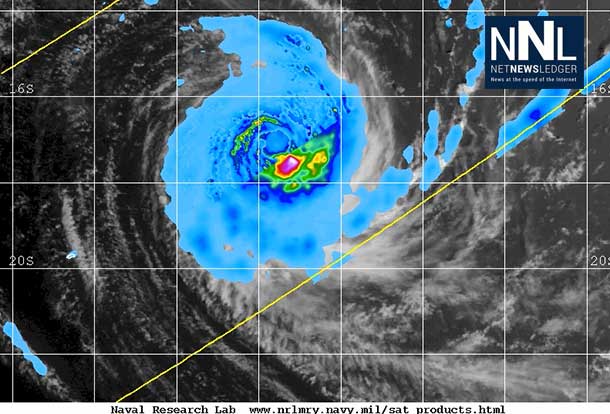

THUNDER BAY – WEATHER – The first tropical storm of the Atlantic Ocean hurricane season formed 40 days before the official kick off of the season. Tropical Storm Arlene formed in the North Central Atlantic Ocean and NOAA’s GOES-East satellite provided forecasters with a look at the storm, swirling far from land areas.
Arlene formed on April 20 as Tropical Depression 1 and strengthened into a tropical storm at 5 p.m. EST that day. On April 20 at 15:12 UTC (11:12 a.m. EDT) NASA-NOAA’s Suomi NPP satellite captured a visible image of Tropical Depression One as it was strengthening into a tropical storm. The image showed a large area of thunderstorms over the southwestern and northeastern quadrants of the storm.
NOAA’s GOES-East satellite captured a visible image of Tropical Storm Arlene on April 21 at 1145 UTC (7:45 a.m. EDT). Thunderstorms wrapped tightly around the center of circulation and a large band of storms circled west of center. Located to the west of Arlene were clouds associated with another frontal system.
The National Hurricane Center (NHC) said at 5 a.m. EST (0900 UTC), the center of Tropical Storm Arlene was located near 40.0 degrees north latitude and 48.0 degrees west longitude. That’s about 1,135 miles (1,825 km) west-northwest of the Azores.
Arlene was moving toward the west near 31 mph (50 kph) and this general motion is expected to continue today. Maximum sustained winds were near 50 mph (85 kph) with higher gusts. The estimated minimum central pressure was 993 millibars (29.33 inches). Arlene was beginning to lose its tropical characteristics as the cyclone interacts with a frontal zone and also moves over cooler water. The new official intensity forecast continues the trend of the previous advisory, which shows Arlene degenerating to a post-tropical cyclone by 12 hours, and dissipating by 24 hours when the system is expected to be absorbed into the larger baroclinic low.
The National Hurricane Center noted “Tropical storms in April are rare and Arlene is only the second one observed in this month during the satellite era. It should be noted, however, that this type of storm was practically impossible to detect prior to the weather satellite era.”
Little change in strength is expected, and Arlene is forecast to become absorbed by a large extra-tropical low pressure area and dissipate later today, April 21.





